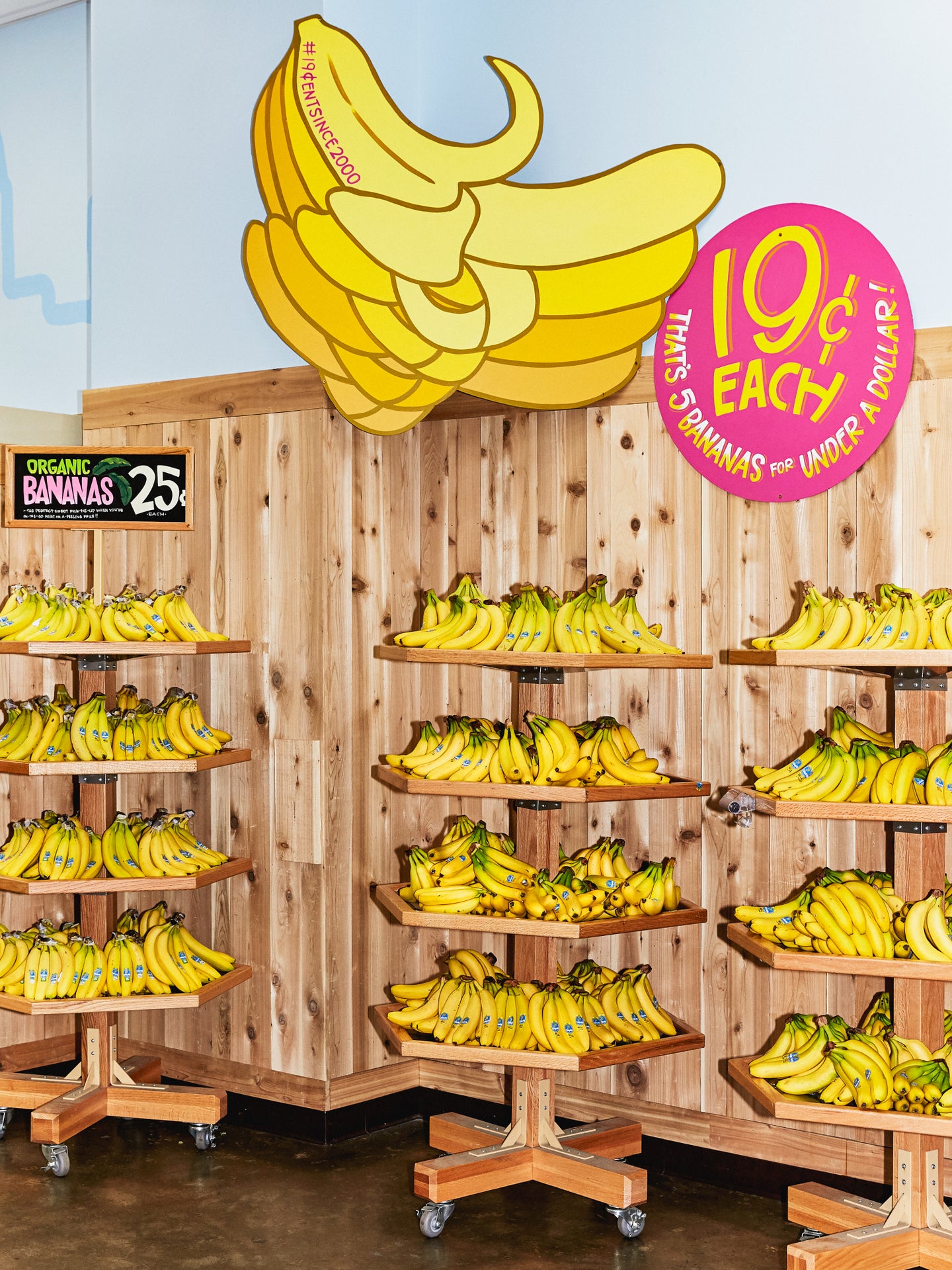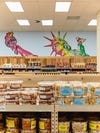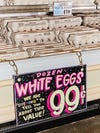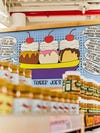This Is the Coolest Job at Trader Joe’s and We Didn’t Know It Existed
Five fun facts about the little-known position.
Updated Oct 11, 2018 12:36 PM
We may earn revenue from the products available on this page and participate in affiliate programs.
When you walk into a Trader Joe’s, you typically have one objective in mind: Stocking up on your favorite cult products. Peanut butter–filled pretzels, sriracha hummus, cauliflower gnocchi—we don’t discriminate. But as we discovered from a recent Reddit AMA by a company employee, TJ’s sweetest treat isn’t a snack at all: It’s art.
In response to a question about the brand’s “unique and adorable” 99-cent greeting cards, the anonymous staffer revealed that, in addition to corporate designers who create the packaging and cards, each Trader Joe’s location has its very own team of in-house artists that is responsible for every sign, mural, and shelf tag you see.
We had to know more about these mysterious in-house artists (because frankly, we had no idea they existed). The other day, we paid a visit to the TJ’s store in Manhattan’s Lower East Side neighborhood to talk with a few of them. They dished on the creative process, how they got their start, and the biggest misconceptions about the job. Here are our favorite fun facts about the position.
No Two Stores Are Alike
Every shop is designed to fit the vibe of its neighborhood. Take the Lower East Side location, which opened last October: The color-charged walls feature a mix of noteworthy landmarks (peep the rainbow Statue of Liberty) as well as nods to the neighborhood’s long-standing street art scene. “There’s this blend of fine art and graffiti, which is visually emblematic of what’s going on in the area,” says Renee, a 20-year Trader Joe’s crew member and captain at the Grand Street store.
Eric, who led the team of TJ’s muralists that designed the space, says the aesthetic was largely influenced by Pop Art. “It’s a big part of the art history of New York,” he shares. The store also celebrates hyper-local institutions. When you walk into the Lower East Side location, you’ll find a lifelike installation of Henry Street Settlement, a 125-year-old not-for-profit downtown where many of the employees volunteer.
No, They Don’t Use Stencils
Look as closely as you want—it’s almost impossible to find a drawing with a flaw. So none of it can be freehand, right? Trader Joe’s artist Michelle decided to clear the air: “I always get asked if we use stencils or have the signs printed. No, we don’t! It’s all done by hand.” While the backgrounds for the shelf tags are computer generated, the lettering and numbers are all created by hand. It’s a huge feat, considering smaller installations and tags are typically swapped out every two weeks.
You Don’t Have to Have an Art Degree
While both Eric and Michelle happen to have fine art backgrounds (Eric started at Trader Joe’s while paving his way through art school in Philadelphia; Michelle earned her B.F.A. at Queens College before joining), it’s not a prerequisite for the job.
“One woman whom I recruited to join the sign team had taken a calligraphy class and just had a love for it,” says Renee, adding that graphic designers also make for great signage artists. In fact, a lack of formal experience can be a benefit. “So much of what goes into a sign is about layout,” she explains. “How can you capture the customer’s attention in five seconds or less? If you have a fine art background, it can actually be a struggle to let go of the idea of perfection.”
The Employees Really Are That Nice
Think of the cheerful artwork in the space as an extension of the people you meet at the register. “That’s literally the question I get asked the most—Is everyone really that nice?” says Eric. “By and large, yes.”
It’s not by chance that the staff has a way of making your day better—checking for a “can do” attitude is embedded in the interview process. “I can train someone how to stack apples. I can’t train someone on how to be nice,” says Renee. “It’s a huge part of how the magic happens here. We look for people who genuinely enjoy interacting with others, and not because they have to.”
Our takeaway? Say hello! You might even find yourself chatting it up with a sign artist in the produce aisle. (When the art team is not channeling their inner Picasso in the back, you’ll find them out on the floor with their fellow crew members.)
The Artwork Is What Makes It Fun to Shop There
So what does all the art have to do with food anyway? For one, it can make for a more enjoyable grocery shopping experience. “I think it matters how you present food,” says Renee. “We’re visual creatures.” A punny fruit placard is guaranteed to make you smile, while others will teach you a thing or two about nutrition or even school you on how to craft the perfect ice cream sundae. “Shopping should be fun,” she adds. “It shouldn’t feel like a chore.”
See more stories like this: Every New Trader Joe’s Product Launching This Month I Use These Trader Joe’s Sauces on Literally Everything Everyone’s Obsessed With Trader Joe’s Cauliflower Gnocchi







